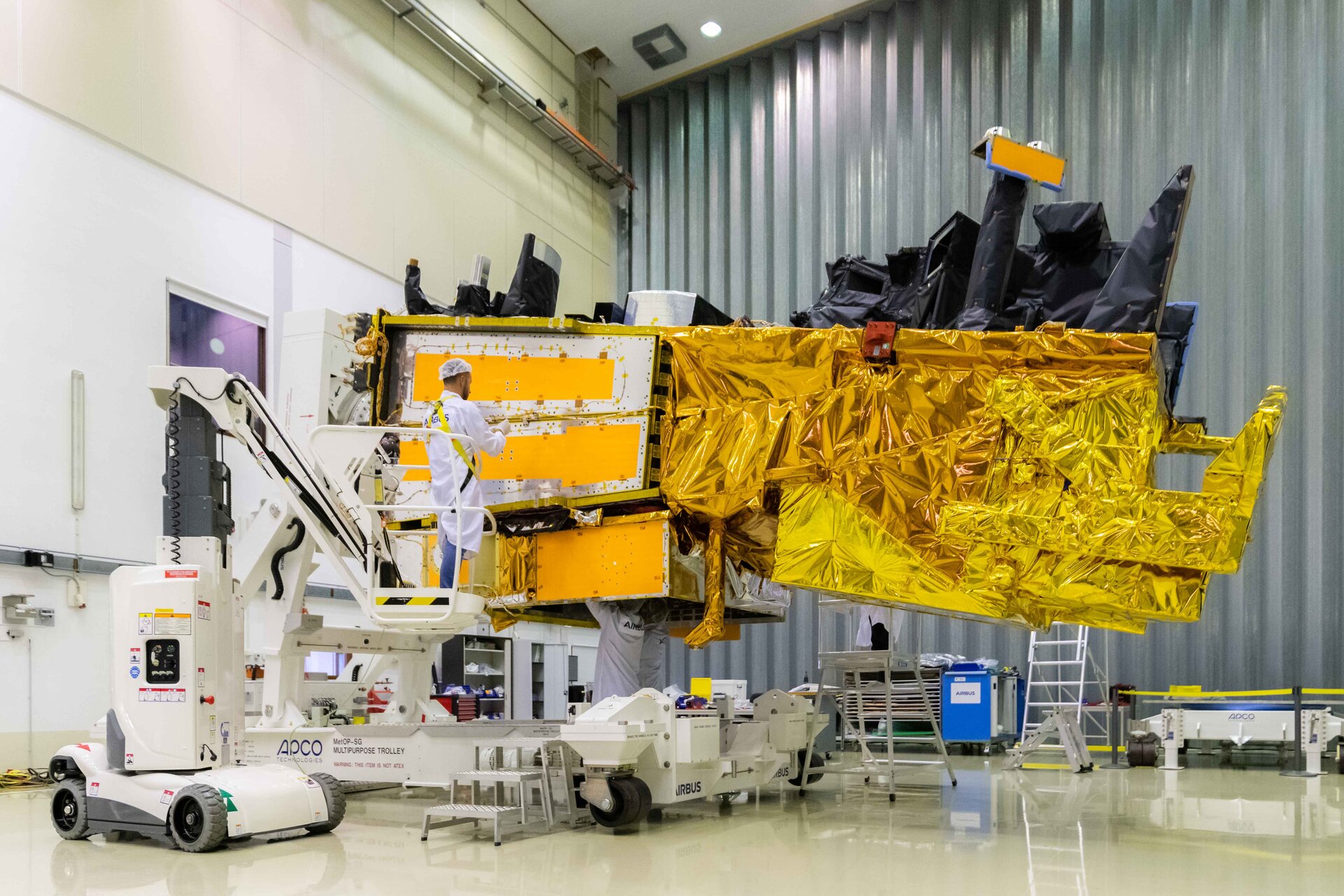Locked up for 20 years – long term storage of components
This summer, the MetOp Second Generation (MOS) STM model of the satellite has been tested in the ESTEC Test Centre.
As part of the MOS project, a TDE activity is attempting to assess how mechanisms and components survive after 20 years in storage.
To study this, over 800 samples of bearings, lubricants, different types of magnets and more were procured and are being put into two different containers. One container is filled with air and the other with nitrogen.
These containers will be sealed for 20 years, and are being kept at the ESA Tribology Lab (ESR Technology – ESTL). Once a year the containers will be opened and samples of the items checked to understand how they are evolving, and whether or not storage has affected their performance. Results found will be the n shared with the European space community.
This is the first time an activity of this magnitude is being done. Normally, long term storage effects are assessed through computer simulations, but using models based on artificial accelerated ageing has so far not been fully proved in terms of representing reality.
There are two projects involved in and financing this activity, MOS and MTG, which both have long-term storage issues.
The activity will also lead to new guidelines for how to better store components. Currently, it is common practice to store them in nitrogen but if the study shows that storing in air has no impact then in the future it could make long-term storage much easier and less costly.
Long term storage is not strictly restricted to these missions, but also most commonly used so will be beneficial to much more wide reaching uses, the entire industry.


